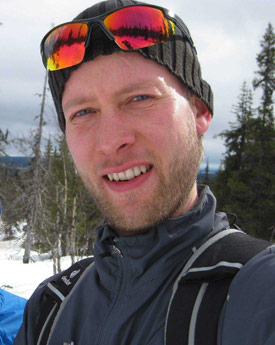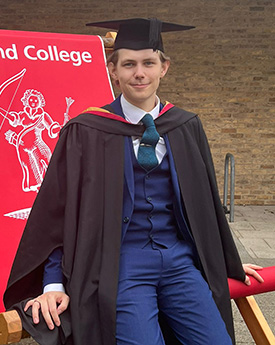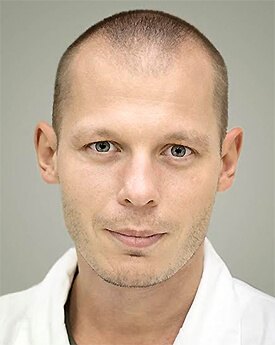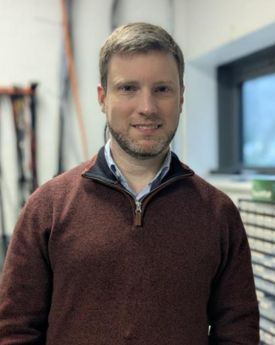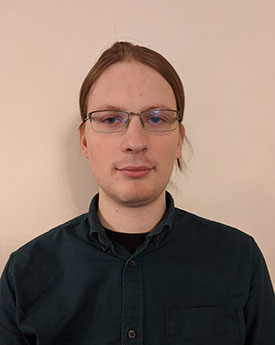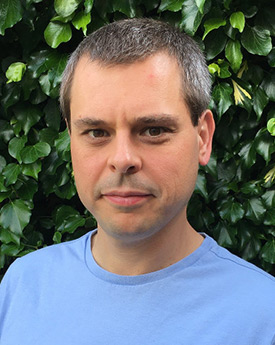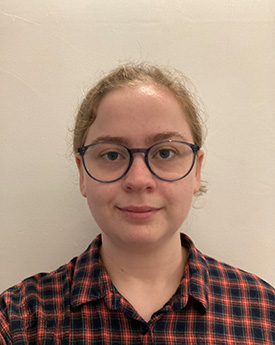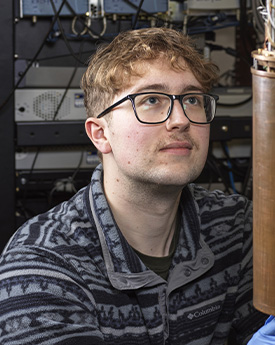Supervisor
Professor Jonathan Prance
Description
The ability to cool materials to millikelvin temperatures has been the foundation of many breakthroughs in condensed matter physics and nanotechnology. At this frontier, quantum behaviour can be studied by making devices smaller and colder, increasing coherence across the system. The goal of this project is to apply a new technique – on-chip demagnetisation refrigeration – to reach temperatures below 1 millikelvin in a range of nanoelectronic structures. This will open a new temperature range for nanoscale physics.
As experiments are pushed into the sub-millikelvin regime, it becomes increasingly difficult to measure and define the temperature of a material or device. The thermal coupling between various sub-systems in can be extremely small; for example, the electrons in the metal wires contacting an on-chip structure can be at a different temperature to the electrons in the chip, the phonons in the chip, and the apparatus that you are using to cool it. This situation calls for a variety of thermometry techniques, each suited to measuring the temperature of a different physical system. The thermometers must also have extremely low heat dissipation and excellent isolation from the room temperature environment. This project will include the development of new and existing thermometry techniques that are suitable for sub-millikelvin temperatures.
Devices will be produced in the Lancaster Quantum Technology Centre cleanroom, and by our collaborators. Experiments will be conducted using the cutting-edge facilities of the Ultralow Temperature Physics group at Lancaster.
You are expected to have a strong interest in and preferably knowledge of:
- electrical measurements of nanoscale devices
- cryogenic techniques
- nanofabrication
- data acquisition using Python or MatLab
Supervisor
Professor Yuri Pashkin
Description
We are seeking PhD students to study electron transport in nanoscale electronic devices based on two-dimensional transition metal dichalcogenides (TMDCs). TMDCs exhibit a unique combination of atomic-scale thickness, direct bandgap, strong spin–orbit coupling and favourable electronic and mechanical properties, which make them interesting for fundamental studies and for applications in high-end electronics, spintronics, etc. Because of its robustness, MoS2 is the most studied material in this family which holds the promise of delivering new rich physics and applications in low-power electronics.
The project will focus on charge transport measurements in nanoscale MoS2-based field-effect transistors and devices with the aim to understand
The work is experimental and involves device characterisation at mK temperatures in a dilution refrigerator. The project will be undertaken in close collaboration with Tyndall National Institute – Cork, the research centre with strong expertise in nanofabrication, including fabrication of TMDC-based devices.
You are expected to have a strong interest and preferably knowledge in the field of
- nanoelectronic devices
- quantum physics
- low-noise measurements
- microwave engineering
- automation of the experiment
- data acquisition using Python or MatLab
- cryogenic techniques
The rapid progress of the field of TMDCs is reflected in the large number of scientists working on these materials and in the large number of publications. However, the field is in many ways still in its infancy stage, which promise many more exciting discoveries and real-world applications.
Funding is available on a competitive basis. To be considered for a funded studentship, please submit your application by 31 January 2025.
Supervisor
Professor Yuri Pashkin
Description
We are seeking PhD students to develop and characterise quantum electronic devices for the dark matter search experiments. This project will be part of the joint interdisciplinary effort undertaken by academics from several UK universities and researchers from the National Physical Laboratory aimed at running and improving the haloscope launched at the University of Sheffield. The haloscope was built in Phase 1 of the National Programme “Quantum Technologies for Fundamental Physics” supported by STFC, and is the only UK facility of this type. The focus will be on superconducting parametric amplifiers operating at mK temperatures as the first amplification stage in the detection chain of the haloscope, but the work may include characterisation of high-quality factor cavities and other microwave components as part of the measurement setup.
The work is experimental and involves device characterisation at mK temperatures in a dilution refrigerator. The project will be undertaken in the Lancaster Quantum Technology Centre in close collaboration with the members of the consortium.
You are expected to have a strong interest and preferably knowledge in the field of
- superconducting devices;
- quantum physics;
- low-noise measurements;
- microwave engineering;
- automation of the experiment, data acquisition and analysis using Python or MatLab;
- cryogenic techniques.
As the efforts for the dark matter search in the past decade have been intensified worldwide, the whole field is experiencing rapid growth which is reflected in the growing number of scientists working in this field as well as increasing number of publications. The sensing technologies developed within this project may lead to exciting discoveries and applications in other sectors.



